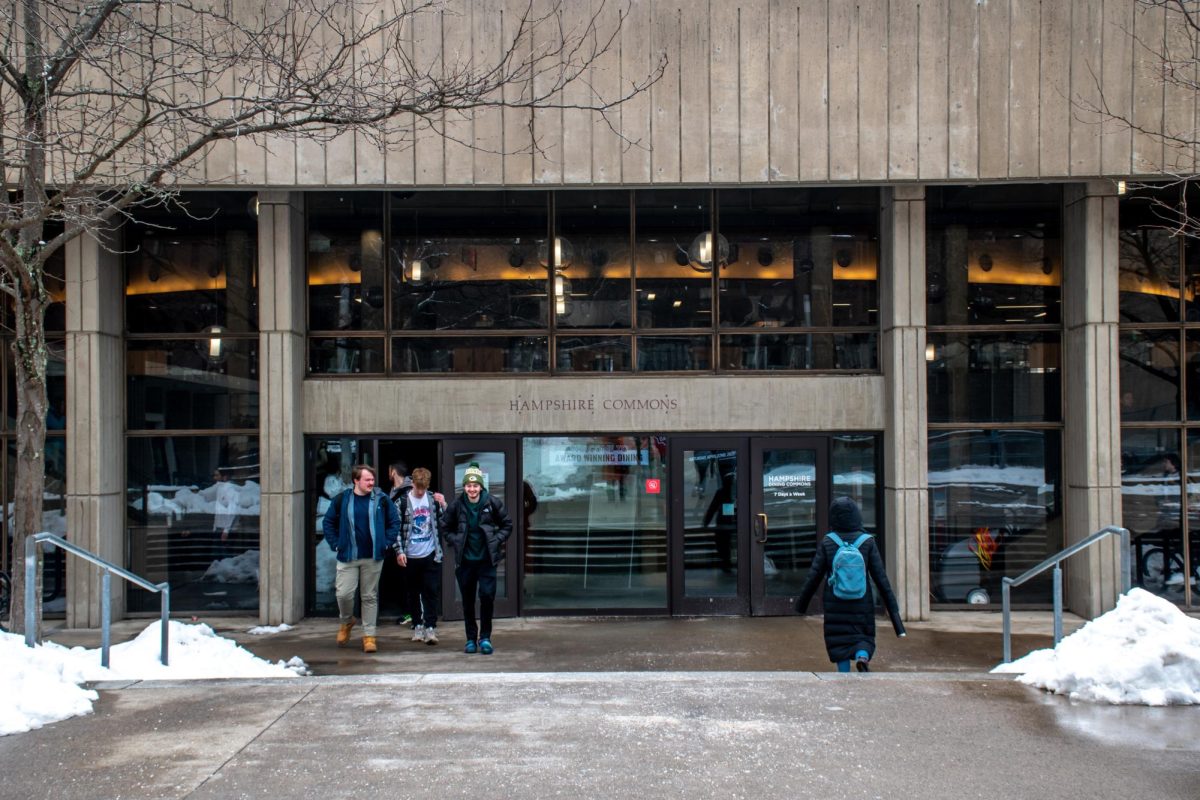The University of Massachusetts recently received the Massachusetts Executive Office of Energy and Environmental Affairs (EEA) Leading by Example award for its efforts to increase sustainability efforts and awareness on campus.
According to Mass.gov, the award recognizes “outstanding efforts among Commonwealth agencies, public higher education institutions and municipalities that have established and implemented policies and programs resulting in significant and demonstrable environmental benefits including energy efficiency, renewable energy, water conservation and waste reduction.”
EEA Secretary Ian Bowles said UMass joins the ranks of the state’s leading agencies and institutions committed to helping the environment.
“This year, Gov. Patrick’s Leading by Example Program is once again pleased to honor state and local governments that are setting the pace in the Commonwealth’s pursuit of a clean energy future,” said Bowles at an award ceremony on Tuesday, Oct. 19 at the Massachusetts State House.
UMass Sustainability Coordinator Josh Stoffel, who was in Boston to receive the award along with Chancellor Robert C. Holub, said that the word is finally spreading in regards to what UMass is doing regarding sustainability.
“We don’t always do the best job at telling our story, but we’re finally starting to get the word out,” said Stoffel.
UMass is the largest energy user of state facilities, according to the EEA. Last year, the campus achieved its goal of reducing greenhouse gas emissions by 26 percent, a benchmark it wasn’t expected to reach until 2012. The goal was set in a 2002-04 baseline, which aimed to reduce all state greenhouse gas emissions by 25 percent by 2012.
Stoffel said the campus’ efforts to reduce greenhouse gas emissions actually started with utility reductions.
“We reduced our energy, water and gas consumptions, and they’re tied very closely together with greenhouse gas emissions,” said Stoffel. “Our greenhouse gas reductions were made because of our utility reductions.”
The greenhouse gas reductions are expected to save taxpayers money in future years and to also cut energy costs at state facilities.
“We’ll be saving several million dollars a year from these recent reductions based on the original energy projection that was made before UMass made the early benchmark,” said Eric Friedman, director of the state’s Leading by Example program. “Despite its growth, it’s a huge accomplishment that the campus was still able to make those reductions.”
The award will not pave the way for any additional state funding, according Friedman, but is a way of showcasing the leadership the campus has displayed in launching sustainability initiatives.
“The award isn’t tied to any state funding but it does show that UMass has a lot of great leadership and sustainability initiatives and the campus’ efforts are to be emulated by other state universities,” said Friedman.
Friedman also said UMass stood out in the application process for the award for its impressive work with sustainability.
“We received over 2,000 applications from around the state for the award, but UMass stood out because of the dramatic reductions to greenhouse gases on campus,” said Friedman. “At the same time, the other state universities are also doing great things to increase sustainability effort and awareness.”
UMass was able to meet its goal early and make significant reductions to greenhouse gas emissions largely because of the elimination of the coal-fired power plant and the construction of the new 10-megawatt natural gas co-generation power plant, Stoffel said. More solar panels will continue to be installed across campus in future years, and there are also plans for the University to purchase a biomass boiler for its co-generation system, which would help speed up reductions even more.
“We’ve completed the feasibility studies for the biomass boiler and we concluded that we could have one on campus and that it would help us,” said Stoffel. “We’re looking into buying one right now.”
Though Stoffel is proud of the award and his own work with sustainability on campus, he gives most of the credit to the students who work with him and help him spread awareness of environmental issues.
“It is the student facilitators who are really running this [sustainability program],” said Stoffel. “Not many programs would have 23 interns in a staff of one.”
Stoffel recently attended a national conference on sustainability and spoke with leaders from California, Wisconsin, and Ohio state universities, among others, on their own programs. Stoffel discovered that UMass’ student involvement in sustainability is ahead of most other universities’ programs.
“Here at UMass, we have one of the most comprehensive student involvement sustainability programs in the country,” said Stoffel. “Anybody can reduce energy, but not everybody can integrate those initiatives into the academic programs like UMass does.”
According to Mass.gov, the Leading by Example program was established in April, 2007 by an executive order from the governor to encourage clean, efficient energy use in executive agencies and public institutions. The act established higher energy efficiency standards for operating state buildings, setting short and long-term targets and goals to advance clean energy and efficiency and reduce greenhouse gas emissions that contribute to global warming. The program encompasses all of Massachusetts’ executive agencies and public institutions of higher education. These agencies and institutions own some 70 million square feet of buildings and 8,000 vehicles, employ over 65,000 people, and include 29 college campuses.
Dan Peltier can be reached at [email protected].






